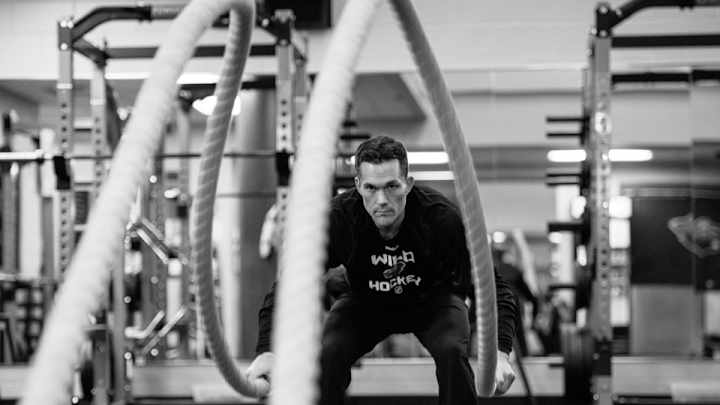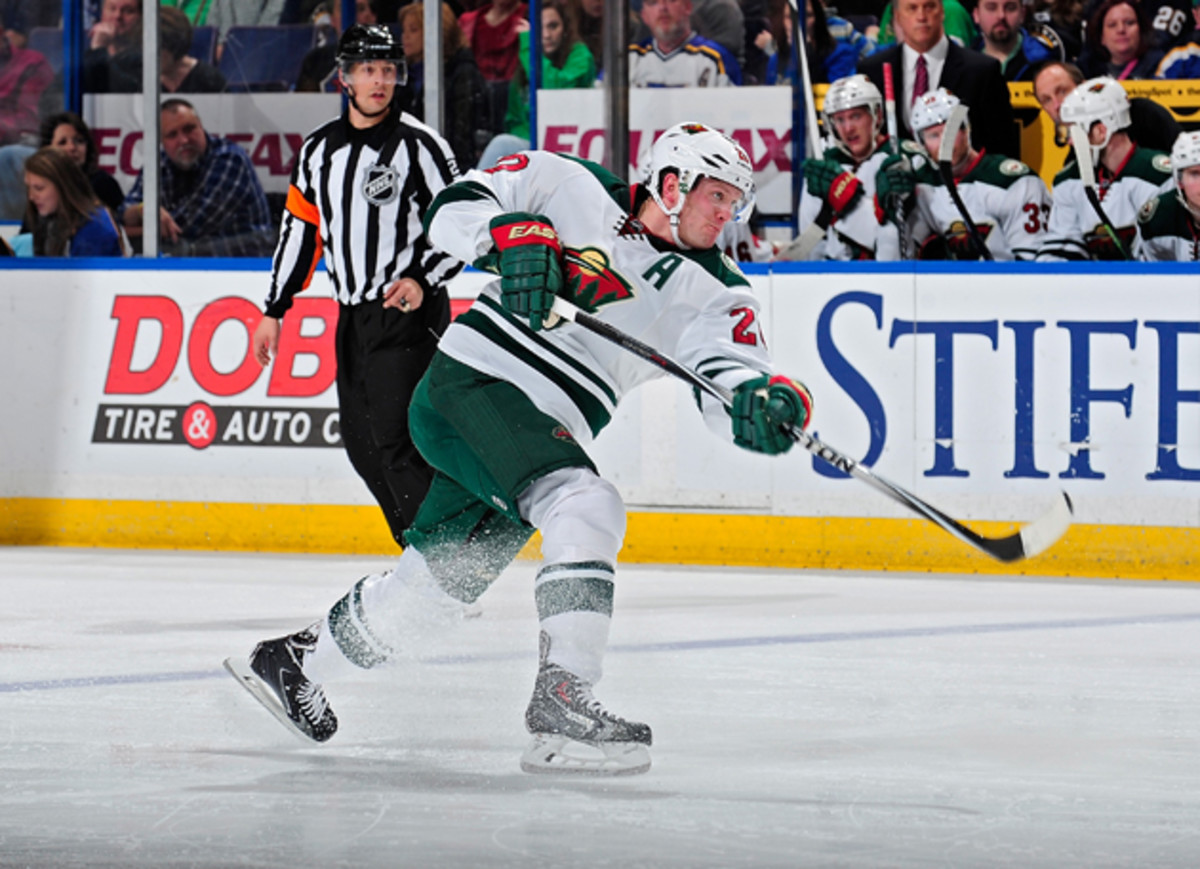Secrets from inside the Minnesota Wild's training room

The Minnesota Wild has no more secrets—at least when it comes to fitness training. Last week, a company called PEAR Sports released workouts designed by Wild strength and conditioning coach Kirk Olson through its mobile fitness app. And according to Olson, these workouts are exactly the same as the sessions he puts his hockey players through. So whether you’re a fan or a rival player, you can now train just as if you were left winger Zach Parise.
Olson, who played hockey as a kid in Minnesota and first started working with the Wild in 2003, isn’t particularly worried about giving away his secrets because he feels the basics of strength and conditioning are both well-known and not even that hockey-specific.
“It’s about just plain and simple doing things smart, working hard,” Olson tells SI.com.
A typical Wild session starts with a deep tissue massage using foam rollers, then up to 10 minutes of dynamic warm-up exercises: jumping jacks, high kicks, and lunges. This pre-workout routine is just to run muscles and joints through their full range of motion, prime the body’s cardiovascular system, and focus a player’s mind on what’s coming next.
[daily_cut.NHL]With hockey being a sport that focuses on an athletes' lower body, the main part of Olson’s workouts concentrate on leg training, especially single leg exercises. Athletes can actually do more which each leg individually than both together—this, called bilateral deficit, is why you can’t jump twice as high on two legs as you can on one—and single-leg training has the added benefit of working on balance. Olson also tries to steer clear of what he calls flavor of the month exercises. He avoids more risky looking exercises, such as a trend to use weights while balancing on stability balls.
“To me that’s kind of a circus act,” Olson says. “If you’re a personal trainer or strength coach you’re putting these people at risk of getting hurt.”
One specific hockey component of his sessions is training for speed. “I look at hockey as being—from a sports standpoint—high intensity interval training,” Olson says. “Hockey’s a sport that’s based on two-second bursts. You take off after a loose puck, and then when you pick up that loose puck, you’re probably either going to stop, start, or turn.”
To prepare the Wild for that type of movement, Olson has the team run back and forth between cones spaced at different intervals, and do weight circuits where they never spend too long at any particular machine. Speed wins games in hockey.

in August 2007 showed that stronger neck muscles reduce head movement during impact, and may reduce concussion risk. So Olson has his players lie down on a bench on their back, front and both sides, and, using his hands, he applies gentle downward pressure to their head while they flex their neck upwards.
Driven by success: Why getting to the next level is all in your head
Right now, with only 15 games left in the regular season, Olson is focusing on just keeping his team fit, and squeezing enough performance out of his players to keep summer at bay a few more weeks. Getting better and stronger, that can wait. Although, Olson thinks the app could help with pacing the team's training as well. A few of his players have already tried out the PEAR Sports workouts on days that they didn’t make it into the Wild’s gym, and Olson is hoping they’ll take the app home with them during the offseason. That way, although he might not get to see them in person, he’ll still be there in their headphones, pushing them.
Besides his own players, fans, and the unknown quantity of rival teams that may take a look, Olson is also hoping that youth players will use the workouts he creates. When novice hockey players show up at the Wild, their level of fitness training experience can be very inconsistent.
“Oftentimes you see your North American player, your collegiate hockey player, be leaps and bounds ahead of a lot of these guys who were playing junior hockey up in Canada, or who were playing over in Europe,” he says. So sharing the Wild’s secrets this way may help his team in the offseason, but Olson's also hoping it'll raise everyone’s game across the board.
